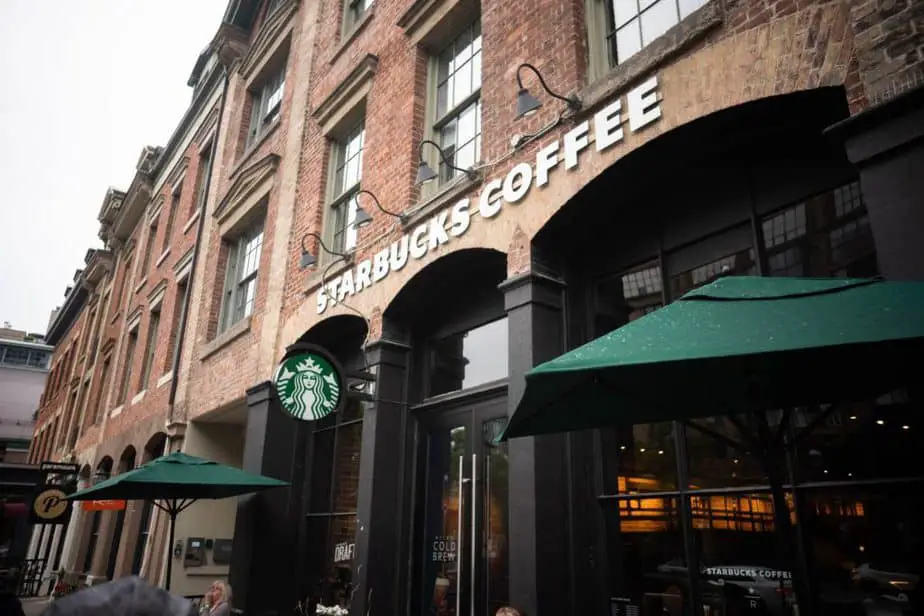Starbucks is synonymous with coffee. Starbucks is the world’s largest coffee chain. It has 32,000 stores in over 80 countries around the globe, but the coffee giant failed to impress Australians with its coffee. Let’s learn ‘Why did Starbucks fail in Australia?’.

Starbucks gained popularity in many countries for introducing a European-style coffee culture, where coffee wasn’t an experience, but Australians already had their coffee culture, and they prefer to go to local cafes because of their familiarity with the Barista and low prices. Starbucks failed to understand the Australian local coffee market, leading to its failure in the land of the Kangaroos.
Starbucks downfall in Australia
Aussies consume 37 million kilograms of coffee each year, and nearly 75% of Australians drink coffee regularly but not Starbucks coffee. Starbucks became popular in other markets because it understood local demand and brought variations in its menu accordingly. So, why didn’t Starbucks replicate its business model in Australia, and what led to the downfall?
Here are five main reasons for the world’s biggest coffee chain failing in Australia.
1. Starbucks speedy entry
Starbucks entered Australia in 2000 and expanded rapidly thereafter. They opened Starbucks stores everywhere, in the major cities and outer suburbs of the country, and when something becomes too available for consumers, it loses its value. So for Australians, Starbucks’ entry wasn’t a big deal because it was everywhere.
Starbucks could have entered slowly and should have expanded further according to customer’s demand, but it failed to understand the value of scarcity and thought Australians will go crazy over its brand value like other countries, and Starbucks will succeed rapidly, which did not happen.
2. The Australian coffee culture
When migrants from Italy and Greece arrived in Australia they brought an intimate coffee culture with them. The Australian coffee culture thrives on its local coffee cafes. Around 95% of coffee cafes in Australia are owned by local Baristas who provide an intimate and unique coffee experience to Australians.
Starbucks didn’t appeal to Australians because they prefer a coffee experience and not just a drink. Hence, Starbucks failed to understand the Australian coffee culture.
3. Starbucks is too sugary for Australians
Australians do not like sugary drinks in the morning that appeal to Americans. Starbucks did not introduce local coffee varieties that are suitable for Australian tastebuds. Hence, most Aussies prefer their local cafe over Starbucks because it suits their taste buds better.
A business must adapt itself to the local demands to succeed, but Starbucks assumed that the Australian coffee market is similar to other western coffee markets, which isn’t true.
4. The Financial crisis
The 2008 recession was a difficult time for many businesses around the world. Starbucks has to close its loss-making stores in other countries and most of its stores in Australia, leaving only 20 stores. The Global financial crisis closed all doors for Starbucks revival in Australia, which had lost around $105 million by 2007.
5. The prices and salaries
Starbucks coffee was costly for Australians who were already savoring delicious coffee in their local cafes. The Aussies do not want to pay a higher price for a drink not suitable to their taste when they can have good coffee at lower prices.
You cannot pay a lower wage of $7-$8 per hour to Australian baristas working for Starbucks. A higher salary meant more spending for Starbucks when its business was already dwindling.
What could have Starbucks done differently?
Every market is different around the world, and for a business to sustain itself, it must be flexible to local demands. Starbucks could have done a few things differently to succeed.
- Understanding the local coffee culture before expanding itself all over the country.
- Starbucks should have opened a few stores before spreading too quickly.
- Starbucks could have collaborated with local Baristas to open Starbucks in Australia to cater to local taste.
- Keeping prices similar to local cafes
- Introducing a menu, suitable for the Australian coffee market.
The way forward for Starbucks in Australia
Starbucks has learned its lesson in Australia. The coffee chain has closed most of its stores in Australia and has adapted a different strategy to operate in Australia. Starbucks now has its stores in major Australian tourist spots to cater to tourists from other countries. As of now, the coffee chain is not looking for a comeback and is targeting tourist customers.
To conclude
Australians are coffee snobs, but Starbucks’ failure to capture the Australian market is because of its business strategy. Starbucks did not study the Australian market before launching itself, and things went wrong one after another for them. Gloria Jean’s coffee is thriving in Australia because they started to cater to the local tastes by collaborating with local Baristas before opening their coffee chain in Australia. Maybe Starbucks could have done something similar.
Frequently asked questions
1. How many Starbucks stores are there in Australia?
A. As of 2021, there are a mere 58 Starbucks in Australia.
2. When did Starbucks enter Australia?
A. Starbucks has been part of the Australian coffee drink market since 2000.
3. Which is the most famous coffee chain in Australia?
A. Gloria Jeans coffee is the most popular coffee chain in Australia.


